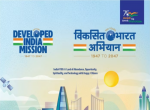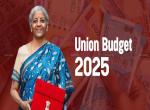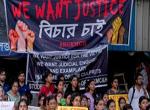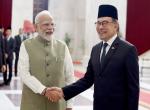Though India is a Union of States we have a judicial system which is hierarchical, from the court of first instance right up to the Supreme Court. In all legal matters competent judicial officers can pronounce judgements on both Central laws and State laws. By contrast, in the United States, federal laws are interpreted and adjudicated upon by Federal courts and State laws by State courts. In India, the Supreme Court is at the apex, but under Article 227 of the Constitution, the power of superintendence over all courts and tribunals throughout the territory over which a High Court has jurisdiction vests in the High Court. At the same time, under Article 141, the law declared by the Supreme Court is binding on all courts and, therefore, the position of all courts, including High Courts vis-a-vis the Supreme Court is one of judicial subordination.
The appointment of judges to these two courts is strictly defined by the Constitution. In the scheme of things there is separation of powers between the three organs of the State which, nevertheless, are equal, that is, the Executive, the Legislature and the Judiciary. In order to ensure the balance of power, the Constitution provides for the Legislature to be constituted through a process of election, the Executive through a process of recruitment governed by an independent constitutional body called the Public Service Commission and the Judiciary to be completely free from interference by the Executive or the Legislature by giving the judges complete independence. Article 124 governs the appointment of judges to the Supreme Court and Article 217 does the same for the appointment of judges of a High Court. In the case of the Supreme Court, Article 124 (2) reads “Every judge of the Supreme Court shall be appointed by the President, by warrant under his hand and seal, after consultation with such of the judges of the Supreme Court and of the High Courts in the States as the President may deem fit… Provided that in the case of appointment of a judge other than the Chief Justice, the Chief Justice of India shall always be consulted”. In the matter of judges of the High Court under Article 217, the President is required to consult the Chief Justice of India, the Governor of the State and the Chief Justice of the High Court. The Supreme Court, in its wisdom, decided that consultation of the President with the Chief Justice means that a Collegium of Judges to be constituted by the Chief Justice will vet every case and on its recommendations the Chief Justice will give his advice to the President. This is an internal matter of the Supreme Court and need not be commented upon. As it is, there is a move to legislate for the setting up of a Commission for recommending judicial appointments, but this is still only at the proposal stage. Despite opinions to the contrary I would suggest that the system as it has evolved has served us quite well and we should not hasten to alter it.
The process of appointing judges to fill present vacancies in the Supreme Court had begun quite some time ago. Apparently in Septemebr 2013 Arun Jaitley wrote to the then Prime Minister, Dr Manmohan Singh, that the name of Gopal Subramaniam who, incidentally, had to resign as Solicitor General of India in an unconnected matter, was under consideration and, in the opinion of Arun Jaitley and the party of which he was Leader of Opposition in Rajya Sabha, there were strong reservations about this name. As has been reported, Arun Jaitley said that initially Gopal Subramaniam had offered his services to government in the Sohrabuddin case, which was pending before the Supreme Court. When it was decided that the Attorney General would handle the case, Gopal Subramaniam offered to assist the court as amicus curiae and though the court never formally invited him to do so, Gopal Subramaniam acted as if he was the amicus curiae and gratuitously advised the Supreme Court that (1) The investigation of the Sohrabuddin case be transferred from the Gujarat Police to CBI and (2) If Amit Shah was given bail, which had already been granted by Gujarat High Court, he should be restrained from entering the State of Gujarat. The Supreme Court ordered accordingly. In his letter, Arun Jaitley is reported to have said that this indicates the bias of Gopal Subramaniam and, therefore, he is not fit to be considered for appointment to the Supreme Court.
In a parallel development, it seems that CBI very foolishly had earlier recorded a note that Amit Shah should be arrested because this would cause Gujarat Police officers to be intimidated and through them CBI could reach its real target, Narendra Modi. This view was endorsed by Ashwani Kumar, then Director of CBI. Whereas I cannot vouch for the veracity of this report I would not be surprised if it were true because this is how CBI seems to function. Normally one should not interject a personal experience in an essay of the present sort, but I am forced to quote a personal experience in my official capacity as Head of the Delhi Development Authority to show that the notes recorded in the Sohrabuddin case are about par for the course for CBI. I received a letter from CBI in 1978 seeking permission under section 197 Cr.P.C. to prosecute Jagmohan, Ranbir Singh and other officers of DDA in what was known as the Kapashera, Samalkha and Andheria Mor demolition case. Sanjay Gandhi, Jagmohan and others were accused of mischief under section 427 IPC, criminal trespass under section 447 IPC, criminal intimidation under section 506 IPC, read with sections 34 IPC, that is, common intention and 120B IPC, that is, criminal conspiracy. I asked CBI to send me the case diary so that I could take a decision about giving permission to prosecute and after much hesitation and correspondence it was sent to me. I was horrified to find that the supervising officer’s note was also attached, which stated the purpose of the investigation was to bring home charges of criminal trespass, mischief, criminal intimidation, etc., against Sanjay Gandhi and others. This note itself indicated bias because the purpose of any investigation is to arrive at the truth and not try and fit the facts to arrive at a predetermined conclusion. The investigation was obviously tainted.
The case diary itself made strange reading. The demolitions were carried out at the behest of and as an agent of the Municipal Commissioner of Delhi, B.R. Tamta. He, therefore, was the main accused. In the case diary itself the investigating officer recorded that because B.R. Tamta had agreed to give evidence on behalf of the State he was not being named as an accused. Under Chapter XII Cr.P.C. the police has no power to drop from the list of the accused a person against whom there is prima facie evidence, nor can the police add to the list of accused a person against whom there was no prima facie evidence. Regarding pardon, that is governed by section 306 Cr.P.C. The Chief Judicial Magistrate, Metropolitan Magistrate or Magistrate First Class may tender pardon, but only in cases triable exclusively by the court of session or the court of a special judge and only where the offence is punishable with imprisonment of seven years or more. The police cannot tender pardon and in any case the maximum penalty for the offences for which Sanjay Gandhi, Jagmohan, etc., were charged only carried imprisonment for a maximum of two years. In such a case pardon cannot be tendered. I wrote to CBI that sanction could not be issued unless B.R. Tamta was also made an accused in the case. R.D. Singh, Special Director of CBI met me and threatened me with dire consequences if I did not issue sanction, on which I not only threw him out of my office but also finally rejected the application for sanction. The accused were never charge-sheeted or prosecuted in this case, but it did leave a lasting impression in my mind that CBI is not an ideal police force whose objective is to fight crime. Therefore, the attitude of Ashwani Kumar and his officers probably represented the reality of the matter, that is, CBI’s objective was not justice but to fix Narendra Modi so that he could be politically finished.
To return to the issue of appointment of judges, the Chief Justice of the Supreme Court recommended to government that four names, those of the Chief Justices of the Calcutta and Orissa High Courts and Gopal Subramaniam and Rohinton Nariman had the approval of the Chief Justice and the Collegium of Judges for appointment as judges of the Supreme Court. The President ultimately approved three names, but expressed reservation about Gopal Subramaniam. On this Gopal Subramaniam withdrew his assent for the post and in the process made scathing remarks about government. His allegation is that he was amicus curiae in the Sohrabuddin case and on this account he has been targeted by government for denial of the post of a judge of the Supreme Court. According to him, the Government of India is prejudiced against him and further, by denying him the post, has proved that it wants convenient judges on the Bench. He has further alleged that this will affect the independence of the Judiciary and will have harmful long-term effects.
Without going into the merits of the Gopal Subramaniam’s charges one cannot help but feel that in making an allegation that government wants to reduce the independence of the Judiciary there is a hint of slander. This is not the first time that government has rejected some names recommended by the Chief Justice of India or denied elevation to the Bench to certain judges of High Courts and to lawyers. In the United States of America, it is a well known practice to try and pack the Supreme Court with judges whose political views are in consonance with the philosophy of the ruling party. Franklin Delano Roosevelt, struggling with the Great Depression and wanting to push the New Deal, wanted liberal judges in the Supreme Court. President George Bush and President Ronald Reagan wanted conservative judges. Certainly Indira Gandhi wanted judges like A, N. Ray who, with Justice P.N. Bhagwati and others forming a Constitutional Bench of the Supreme Court ruled that when a proclamation of Emergency under Article 352 was in force the fundamental rights stood suspended, which meant that the right to life under Article 21 also stood suspended. Of course, the court did not clarify whether this meant that the Executive could arbitrarily and without trial put a man to death, but in effect that is how it can be read. Justice H.R. Khanna, in the lone dissenting judgement, strongly opposed this view and upheld the right to life and further ruled that the fundamental rights could not be suspended. Indira Gandhi never forgave him and he was not elevated to the post of Chief Justice. During the Emergency in the Bhimsen Sachar case, Chief Justice Tatachar of the Delhi High Court ruled that though the fundamental rights may have been suspended, the Code of Criminal Procedure remained intact, section 482 Cr.P.C. gave the High Court the inherent power to secure the ends of justice and, therefore, using the power of habeas corpus, he ordered the release of Bhimsen Sachar, Kuldip Nayyar and others. Similarly, the Gujarat High Court, in the case of Himmat, a journal produced by Rajmohan Gandhi, ruled against censorship and Himmat published without censorship thereafter. The Chief Justices of Delhi and Gujarat High Courts were denied elevation to the Supreme Court. Despite this, what is proved is that even during the Emergency, our Supreme Court and High Courts did not compromise on their independence, especially the High Courts, which proved that the independence of the Judiciary is strong and zealously guarded. Is it Gopal Subramaniam’s case that what could not be done in the Emergency, that is, bringing the courts to their knees has become possible because Gopal Subramaniam has not been elevated to the Bench? He is too eminent a lawyer to be pardoned for even suggesting such a thing.
The method of appointment and the autonomy of an organisation may be interconnected, but they are not inter-dependent. In any case, the scheme of the organisation of the State in India is such that the three major pillars, the Executive, the Legislature and the Judiciary are all autonomous within their own spheres. The Legislature has untrammelled powers of legislation, subject only to constitutional validity, approving the budget, calling the government to account through the collective responsibility of the Council of Ministers and through the various mechanisms worked out for legislative control. The Executive power vests in the President, who exercises it through officers appointed by him, but on the aid and advice of his Council of Ministers. The business of government is conducted according to the Business Rules framed under Article 77. This applies mutatis mutandis to the States also. In the exercise of executive powers, the Executive is autonomous, but subject to accountability to the Legislature and to such pronouncements that courts may make if adjudication is called for. Similarly, the Judiciary is autonomous, appointment of judges is not within the exclusive purview of the Executive, they cannot be removed except through due constitutional process and they are free in the matter of adjudication to pronounce judgement according to law. There is no encroachment on this autonomy nor ever has been. At the same time, the Legislature is constituted through election, a process under a constitutionally created Election Commission of India. Despite this the House is constituted by the President, who also summons it to session. The officers of the Executive are selected by a constitutionally created Public Service Commission, but their appointment is made by the President and protection is provided by Articles 311 and 312. In the case of the Judiciary, the selection is made by the Chief Justice of India and the appointment is made by the President. In all three cases, there is convergence at the level of the President. Article 124 makes consultation with the CJI mandatory, which means that a person not recommended by the CJI cannot be appointed to either the Supreme Court or a State High Court. That, however, does not mean that the President, on the advice of his Council of Ministers, cannot reject a name suggested by the CJI. There would be interference with independence if the President arbitrarily appoints judges. There is no interference if the President rejects a name suggested by CJI. That has happened in the past and may happen in the future also, which is precisely why Article 124 provides for a process of consultation.
Gopal Subramaniam is a legal luminary whose erudition and brilliance is universally recognised. He is eminently qualified for elevation to the Bench, which would be richer by his presence. Conversely his absence from the Bench is not tantamount to jeopardising the autonomy of the Judiciary. This last remark is made because by suggesting that the independence of Judiciary is in danger, Gopal Subramaniam has done no service to government, the Judiciary or even to himself.
Published Date: 3rd July 2014, Image source: http://www.orissadiary.com









Post new comment